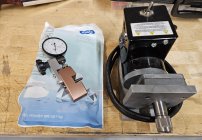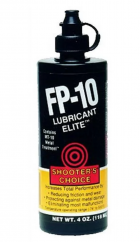Alex Wheeler
Site $$ Sponsor
Since there is always so many questions about this topic I wanted to share my process that has always produced excellent results for me. I set up my tools a little differently because I played with all of this stuff when I started turning and found it did make a difference.
The first thing is neck fit on the mandrel. You want this snug. The reason is that any play will transfer into thickness variation. I like a neck that you can not just push on and off by hand. In many cases I will turn brass straight out of the box. I find the carbide turning mandrels from Sinclair fit a lot of virgin cases just right. Because of this fit, you need to lube every case and you must use a carbide or coated mandrel to prevent galling. I have used FP-10 lube from the start and its worked great. You can get a little too tight, but it pretty hard to do. If you see galling or your tearing up the inside of the neck your too tight or the mandrel is rough. If your turning necked up brass, it will get pretty snug when you push through the donut. But it eases up when you cut it.
Because of this fit, you will be producing some heat. So you want to set the turning tool on a cold pack in between cases. Measure every 5th case neck or so and when you see one .0001" thicker, you need to slow down a little and let the tool cool. As the body of the tool heats up and expands it will cut thicker.
The cutters edge also plays a role. I uses HSS and put a small radius on the angle transition from the neck to shoulder. This helps cut a smoother finish with less grooving. I also break the edge slightly. A razor sharp edge is not desirable. It cuts too freely and if the neck fit is not right it will cut a thin spot. You want to dull the edge just slightly so the tool pushed the neck into the mandrel. I am just talking about dragging some 1500 grit along the edge lightly a couple times.
I hold the turner in my hand and try to push against the back of the mandrel with my thumb as to not cock the cutting tool. Let if float freely with a light hold.
With these methods I have no problem keeping necks to where I can not measure the difference with my .0001" ball mic. Loosen up the fit and sharpen the cutter and .0002" or worse is not a problem to find.
Hope this helps.
The first thing is neck fit on the mandrel. You want this snug. The reason is that any play will transfer into thickness variation. I like a neck that you can not just push on and off by hand. In many cases I will turn brass straight out of the box. I find the carbide turning mandrels from Sinclair fit a lot of virgin cases just right. Because of this fit, you need to lube every case and you must use a carbide or coated mandrel to prevent galling. I have used FP-10 lube from the start and its worked great. You can get a little too tight, but it pretty hard to do. If you see galling or your tearing up the inside of the neck your too tight or the mandrel is rough. If your turning necked up brass, it will get pretty snug when you push through the donut. But it eases up when you cut it.
Because of this fit, you will be producing some heat. So you want to set the turning tool on a cold pack in between cases. Measure every 5th case neck or so and when you see one .0001" thicker, you need to slow down a little and let the tool cool. As the body of the tool heats up and expands it will cut thicker.
The cutters edge also plays a role. I uses HSS and put a small radius on the angle transition from the neck to shoulder. This helps cut a smoother finish with less grooving. I also break the edge slightly. A razor sharp edge is not desirable. It cuts too freely and if the neck fit is not right it will cut a thin spot. You want to dull the edge just slightly so the tool pushed the neck into the mandrel. I am just talking about dragging some 1500 grit along the edge lightly a couple times.
I hold the turner in my hand and try to push against the back of the mandrel with my thumb as to not cock the cutting tool. Let if float freely with a light hold.
With these methods I have no problem keeping necks to where I can not measure the difference with my .0001" ball mic. Loosen up the fit and sharpen the cutter and .0002" or worse is not a problem to find.
Hope this helps.













